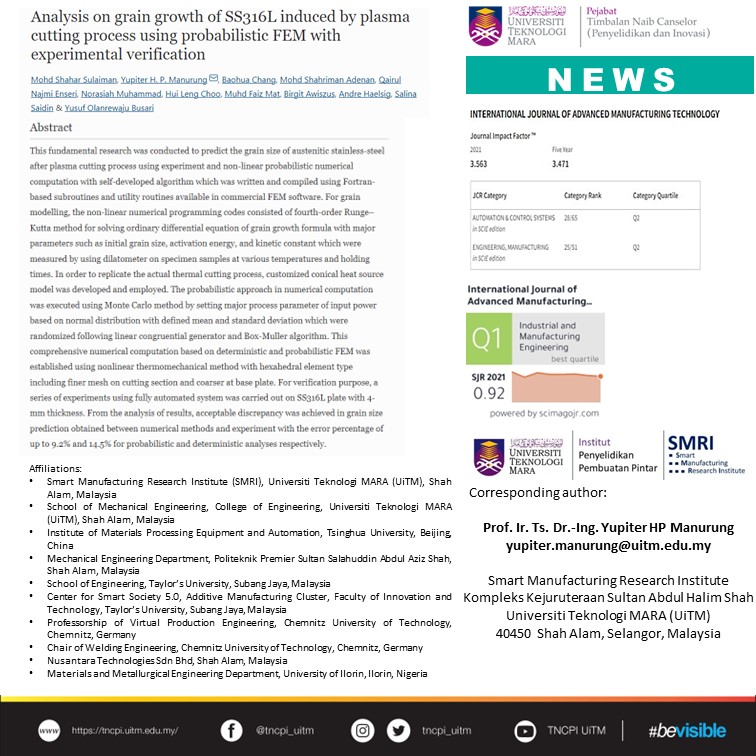
This fundamental research was conducted to predict the grain size of austenitic stainless-steel after plasma cutting process using experiment and non-linear probabilistic numerical computation with self-developed algorithm which was written and compiled using Fortran-based subroutines and utility routines available in commercial FEM software. For grain modelling, the non-linear numerical programming codes consisted of fourth-order Runge–Kutta method for solving ordinary differential equation of grain growth formula with major parameters such as initial grain size, activation energy, and kinetic constant which were measured by using dilatometer on specimen samples at various temperatures and holding times. In order to replicate the actual thermal cutting process, customized conical heat source model was developed and employed.
The probabilistic approach in numerical computation was executed using Monte Carlo method by setting major process parameter of input power based on normal distribution with defined mean and standard deviation which were randomized following linear congruential generator and Box-Muller algorithm. This comprehensive numerical computation based on deterministic and probabilistic FEM was established using nonlinear thermomechanical method with hexahedral element type including finer mesh on cutting section and coarser at base plate. For verification purpose, a series of experiments using fully automated system was carried out on SS316L plate with 4-mm thickness.
From the analysis of results, acceptable discrepancy was achieved in grain size prediction obtained between numerical methods and experiment with the error percentage of up to 9.2% and 14.5% for probabilistic and deterministic analyses respectively.
https://link.springer.com/article/10.1007/s00170-022-10082-w
Corresponding Author:
Prof. Ir Ts. Dr-Ing. Yupiter HP Manurung
Smart Manufacturing Research Institute (SMR)
College of Engineering
